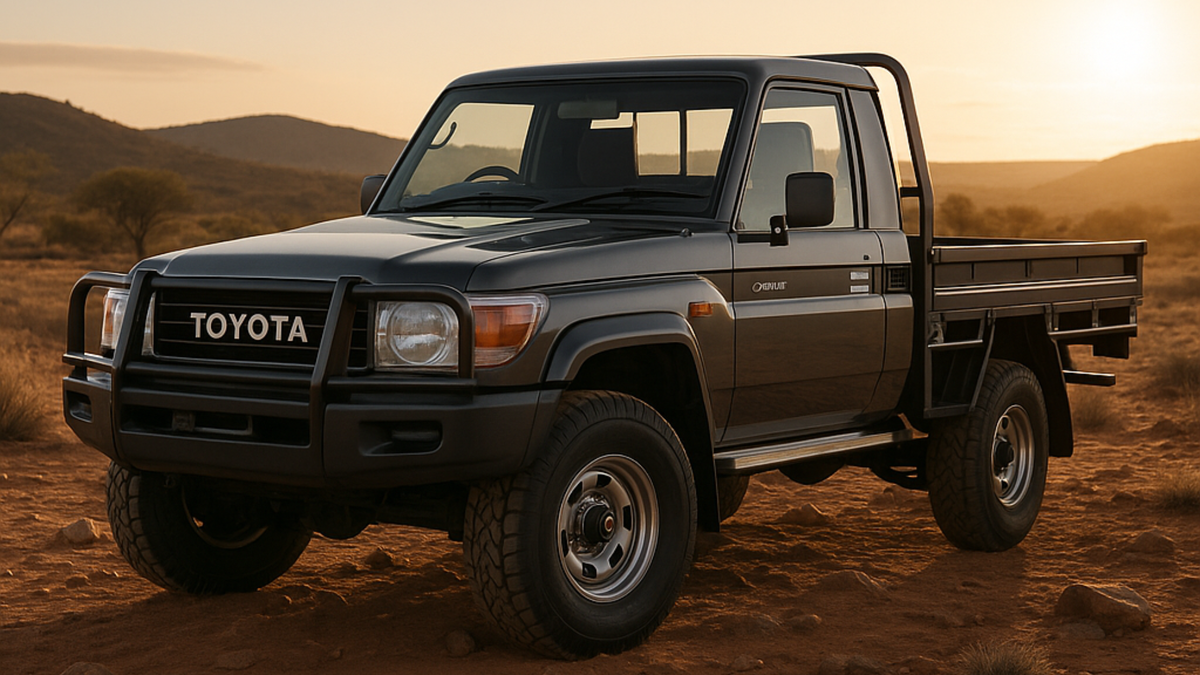Opportunity Cost: Why you need to purchase an old bakkie with terrible fuel efficiency

Last weekend, I was invited to a friend's 32nd birthday weekend camping trip. It was great fun and the first night we embraced the "celebration" a bit too aggressively - as one does.
It was great fun and we stayed up until 3am, sitting by the fire, drinking whisky and solving problems the world did not even know it had. One of the discussions that evening stuck with me.
A friend and I were discussing bakkies, because he mentioned he was looking to purchase one. I asked him which bakkies he's considering, and he said, that he is torn between:
- Purchasing a "newish" secondhand Toyota Hilux or Ford Ranger (2020+ models, with low mileage < 100 000km) that costs about R600 000.
- Purchasing a much older Toyota Land Cruiser 79 series (2000-2005 models, with high mileage >250 000km) that costs about R200 000.
At the moment he is leaning towards purchasing the older and cheaper bakkie.
My immediate reaction was - BUT WHAT ABOUT THE FUEL CONSUMPTION?
The reason for me asking this, is because the newer Hilux/Ford bakkies can get ±12km/L while the older Toyota Land Cruisers only get ±6km/L. So it's a no brainer that it's better to get the newer bakkie with the better fuel consumption.
That's when he dropped the bombshell on me and showed me that I allowed two biases to flaw my thinking.
Bias 1: Negativity
We all know it sucks to fill your car with fuel and swiping your card and the money you worked hard for disappear. Repeatedly doing this has conditioned us to have such a negative connotation with fuel consumption, that we completely overestimate its importance, causing us to miss more important information.
Bias 2: Underestimation
Because I was so fixated on the poor fuel consumption of the older bakkie, I forgot all about the amount of money I would need to spend on a newer bakkie in order to get the better fuel consumption, because that's all that matters right? RIGHT? NO.
The proof
It's difficult to explain why, without doing the math to prove it, so here goes.
Fuel Efficiency vs Purchase Price
- Hilux/Ranger costs around R600,000 and gives 12 km/L
- Land Cruiser 79 costs around R200,000, but only gives 6 km/L
At a fuel price of R25/L and driving 20,000 km per year:
- Hilux costs ≈ R41,667/year in fuel
- Land Cruiser costs ≈ R83,333/year in fuel
That’s an extra R41,667/year for the Cruiser in fuel.
Over 10 Years of Driving
That adds up to:
- Extra fuel cost: R41,667 × 10 = R416,670
Sounds bad, right? But here’s the thing — only after 10 years of driving the Cruiser (with half the fuel efficiency) do you break even with the initial purchase price of the more fuel-efficient Hilux/Ford.
What If You Invested the R400,000 You Saved?
If you buy the Land Cruiser for R200,000 and invest the R400,000 price difference at 12% per year (compounded), you’d have:
💼 ≈ R1,242,000 after 10 years
That’s a gain of ~R842,000, which more than cancels out the extra fuel cost.
In other words - if you invested the money, it will ALWAYS outgrow the fuel spend, and the more expensive Hilux/Ford will never be the better option.
Financing Makes the New Bakkie Worse
Most people don’t pay R600,000 in cash. If you finance it at 12% over 5 years:
- Your monthly payment is ≈ R13,345
- You repay a total of ≈ R800,700
- That’s R200,700 in interest alone
So in total, you’re paying ~R1 million for that new bakkie - which only makes the calculation worse.
Don't forget about the Opportunity Cost
While the Land Cruiser may use more fuel, it’s:
- Cheaper upfront
- Cheaper overall (when accounting for financing)
- Far better if you invest the difference
You’ll still come out on top — even after paying double for fuel.
What we often overlook is the opportunity cost — the money we could have earned if we made a smarter financial choice. That R400,000 saved by buying the older Land Cruiser isn’t just sitting idle. If invested wisely, it grows quietly in the background, potentially doubling or tripling over time. Meanwhile, the newer bakkie loses value and quietly drains money through interest repayments and depreciation.
The real cost isn’t just the sticker price — it’s the lost opportunity to build wealth.
Caveats you need to keep in mind
- For this to make sense, you need to purchase the older bakkie cash
- You need to be able to afford the fuel expenses on a monthly basis
- The old bakkie you purchase, needs to be very reliable, easy to fix and have the ability to put 600 000km to 800 000km on the clock - like a Toyota Land Cruise 79 Series
Lessons I learnt from this
- I am very likely to overestimate how bad something is (i.e fuel consumption) due to negative connotations I have with it
- I am very likely to underestimate the opportunity cost of paying more for something that has a few features that are "better"
